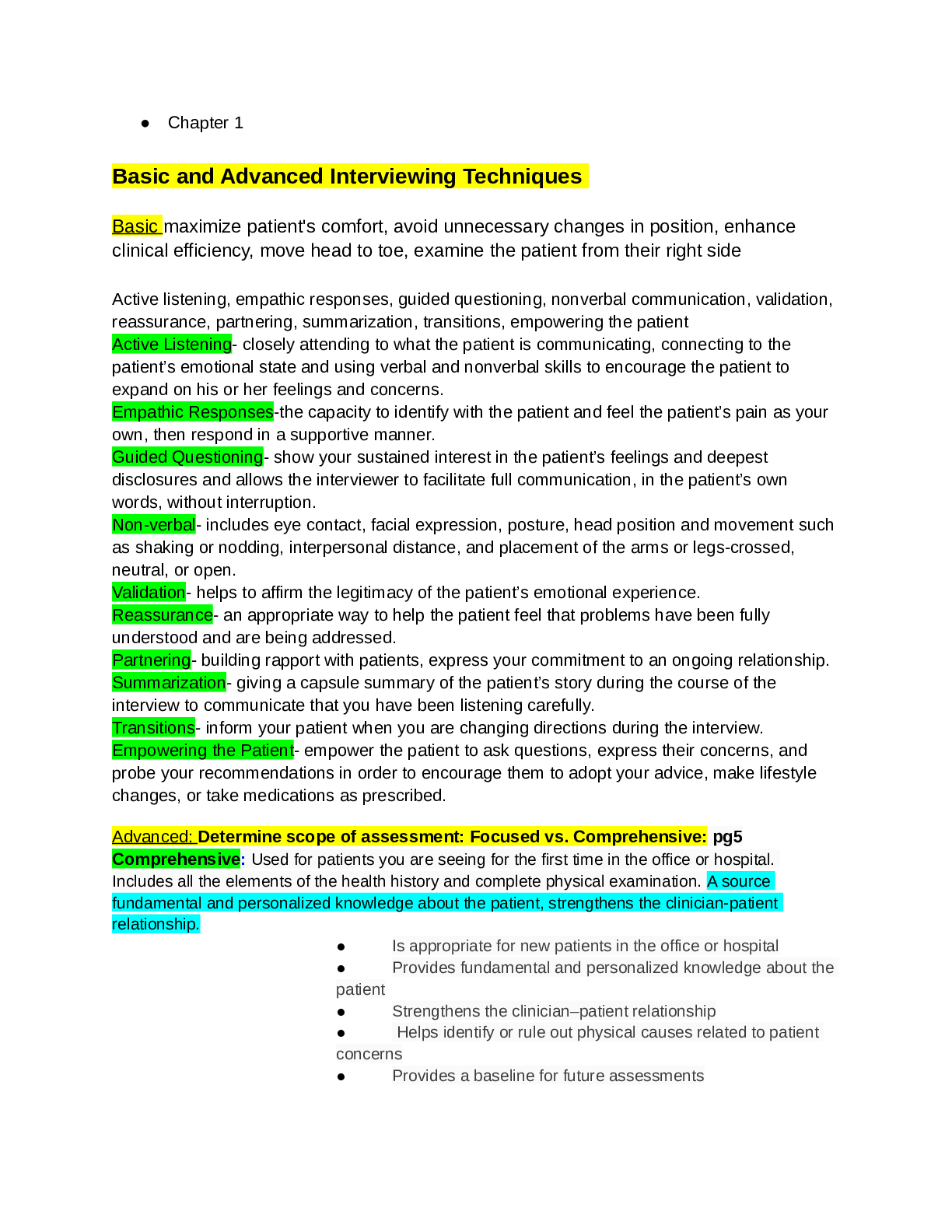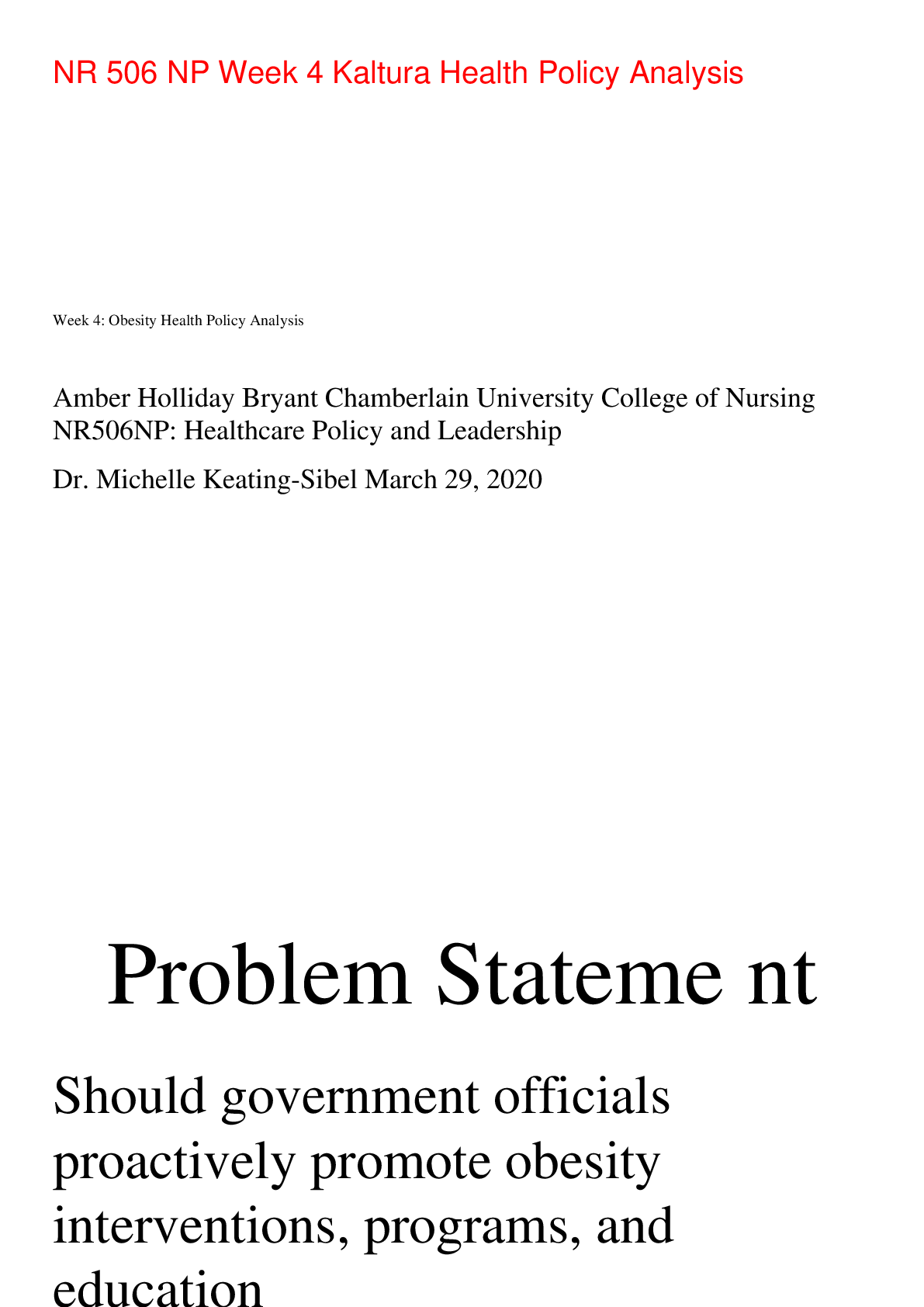Computer Science > STUDY GUIDE > Georgia Institute Of TechnologyOMSCS 6250Lesson_1_CN (All)
Georgia Institute Of TechnologyOMSCS 6250Lesson_1_CN
Document Content and Description Below
Lesson 1: Introduction, History, and Internet Architecture Lesson 1 Readings A Brief History of the Internet Notes Internet Architecture Internet Architecture Introduction Transcript The OSI Mo... del (Open Systems Interconnection) The OSI Model Transcript What are the five layers in the OSI model? APSTNDP Application Presentation Session Transportation Network Data Link Physical Where are the sockets? The application, presentation, and session layers are combined into a single layer known as the application layer. The sockets are between the application and transport layer.Lesson 1{ Introduction, History, and Internet Architecture 2 Application, Presentation, and Session Layers Application, Presentation, and Session Layers Transcript What does the application layer do? It varies based on the application, but it is primarily to display information. What does the presentation layer do? It converts the data into a format that can be presented. What does the session layer do? It combines and synchronizes different streams of information. Transport and Network Layer Transport and Network Layer Transcript What does the transport layer do? Communication between end hosts Congestion control What does the network layer do? It moves datagrams (packets) between internet hosts. Data Link and Physical Layer Data Link and Physical Layer Transcript Layer Encapsulation Layers Encapsulation Transcript The End to End Principle The End to End Principle Transcript Violations of the End-to-End Principle and NAT BoxesLesson 1{ Introduction, History, and Internet Architecture 3 Violations of the End-to-End Principle and NAT Boxes Transcript What are examples violations of the e2e principle? firewalls network address translation ANATB boxes The Hourglass Shape of Internet Architecture The Hourglass Shape of Internet Architecture Transcript Evolutionary Architecture Model Evolutionary Architecture Model Which of the following are ramifications of the “hourglass shape of the internet”? A. Many technologies that were not originally designed for the internet have been modified so that they have versions that can communicate over the internet (such as Radio over IPB. B. It has been a difficult and slow process to transition to IPv6, despite the shortage of public IPv4 addresses. C. Applications like BitTorrent leverage peer-to-peer networking instead of a more traditional client-server model for better performance. A is correct. Modifying a technology so that it is compatible with the rest of the internet (i.e., by making it compatible with IPB greatly enhances market penetration (from the vendor’s perspective), and/or decreases the amount of extra development that would need to happen. B is correct. A big part of the Internet infrastructure uses IPV4 while the cost of transitioning is high. This reflects as a consequence of the narrow waist. C is not relevant here. The hourglass shape of the Internet refers to Internet architecture in terms of protocols available at the different layers. Optional Reading: Architecture Redesign Architecture RedesignLesson 1{ Introduction, History, and Internet Architecture 4 Interconnecting Hosts and Networks Interconnecting Hosts and Networks Repeaters and hubs operate on which layer? Physical AL1B Bridges operate on which layer? Data link based on MAC addresses AL2B Routers operate on which layer? Network AL3B Learning Bridges Learning Bridges How does a bridge learn? A forwarding table Looping Problem in Bridges and the Spanning Tree Algorithm Looping Problem in Bridges and the Spanning Tree Algorithm Transcript Which of the following statements are correct? A. The Spanning Tree Algorithm helps to prevent broadcast storms B. The Spanning Tree Algorithm presented in this lecture always results in a spanning tree that places the root in a topologically central location, so that all the nodes are as “close” as possible to the root. C. Network traffic cannot traverse an inactive link. A is correct. That is the purpose of the Spanning Tree Algorithm. Although it is still possible to have broadcast storms on the network (such as from a bad network card), STP prevents broadcast storms that result from having loops present in the network topology. B is incorrect. The Spanning Tree Algorithm presented guarantees a unique spanning tree that all the nodes will agree to, but sometimes this [Show More]
Last updated: 2 years ago
Preview 1 out of 48 pages

Buy this document to get the full access instantly
Instant Download Access after purchase
Buy NowInstant download
We Accept:

Reviews( 0 )
$14.00
Can't find what you want? Try our AI powered Search
Document information
Connected school, study & course
About the document
Uploaded On
Sep 06, 2021
Number of pages
48
Written in
Additional information
This document has been written for:
Uploaded
Sep 06, 2021
Downloads
0
Views
138









.png)



